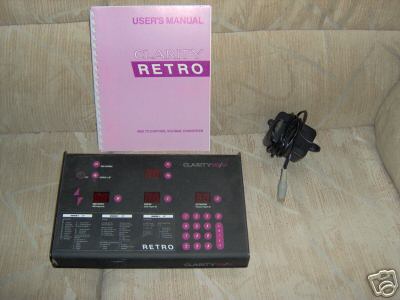video uploads by NONO MODULAR
Update: pic of the NONO in a throwback, retro-styled, wooden drum machine case added below.
Currently on Kickstarter here
 Press release follows:
Press release follows:
Major Tom is a eurorack sequencer designed for percussive synthesis in eurorack modular context.
Technically it is a 4 track cv-gate sequencer (expandable up to 12 tracks with expanders modules) and with some unique features focused on rhythmic and polyrhythmic aspects.
In 1972, EKO COMPUTERHYTHM introduced the first programmable drum machine to the market and invented the 16 STEP writing, which would become a standard for all subsequent programmable drum machines and step sequencer and has remained unchanged until now.
50 years later, NONO MODULAR with his Major Tom, introduces a small but fundamental modification to this standard, that allows for easily creating more complex and groovier rhythms without losing the ease and immediacy of the classic system, thus expanding the possibilities we have had so far with hardware sequencers.
MAJOR TOM presents itself as a classic 16-step CV/gate sequencer but also implements triplet steps in parallel (the outer orbits of the 16-step circle), making it the only hardware step sequencer to offer this possibility and, above all, in such an immediate way.
It is a 4-track Eurorack CV/gate sequencer (expandable up to 12 tracks with 2-channel expansions) with a focus on writing rhythmic and polyrhythmic parts and on treating the width, length, and fragmentation of the gate for each step.
All these features are extremely useful for creating more dynamic rhythms, easily creating burst effects, rolls, ratcheting, and for precise work on percussive synthesis in the Eurorack modular context (for example, working with ping/ring techniques with low-pass gates and filters of West Coast systems or stimulating delays and resonators).
A quantized CV for each track allows you to tune or modulate your patches.
Of course, the sequencer also allows you to work with drum modules and create classic melodic sequences like any other CV/gate sequencer.
ROUND COLOR DISPLAY
A large round display allows you to keep track of everything that happens. For clarity, each track has its own color (white, yellow, blue, red, and white and green for expansions).
There are very few submenus in this sequencer, which presents itself with a very analog and "one button, one function" philosophy that helps with orientation and provides great immediacy in live performances.
Underneath what you see directly with your eyes, there are only quantization and clock dividing parameters, sequence group saving banks that are saved directly on microSD (to facilitate export, management, and backup), and various copy/paste/freeze tricks that are essential for both fast programming and performance/variation.
EXPANSIONS
Each expansion adds two channels with all their respective controls and allows for expanding the sequencer tracks according to the need, up to 12 total channels tops, connecting by 4 expansions.
Expandability is not the only advantage of this structure because, in addition to expanding the available channels, it allows us to keep the project open and develop other types of expansions with different characteristics and different controls to meet other needs.
TECHNICAL INFORMATION
• 4 CV/Gate tracks (expandable up to 12 with expansions)
• 16-step sequencer with the addition of triplet steps (total of 24 steps)
• 4 independent parameters per step, adjustable via dedicated button and encoder (3 for gate and 1 for CV)
• LEVEL (gate amplitude, from 0V to 10V)
• LENGTH (gate length, from a very short trigger of 1% of the gate to a full gate step)
• SPACER/FRAGMENTER (gate fragmentation up to 10 parts and application of dynamic masks to the impulse group, such as increasing, decreasing, linear, random, alternating, etc.)
• CV (Quantized voltage in different scales)
A large part of the module is dedicated to sequence controls in order to have direct and immediate contact and maximum playability.
3 performance controls and a colored button for each track:
• LARGE VAR SWITCH KNOB with 10 positions switch where you can save 10 different sequences instantly switchable for use as variations.
• LAST STEP SWITCH KNOB, allowing independent change of the LAST STEP of the individual track from 16 STEPS to 1, easily creating polyrhythms.
• SHIFT KNOB to finely delay the entire sequence independently from others.
• COLORED BUTTON, colored button to select the track to program. Other functions are associated with this button such as pattern copy/paste and track reset.
Additional features include:
• Encoder for sequence speed
• Start/Stop button and Reset button (general reset and individual track resets in combination with the colored track button)
• CLOCK OUT and RESET OUT
• CLOCK IN, RESET IN, and CV IN
• MAJOR TOM is 42HP, expander IS 14HP , DEPTH is 3,5cm
• MEMORY: hundreads and hundreads of “LIVE SCENE” can be saved and reorganized on SD (LIVE SCENE is the set of 10 patterns saved in the large knob of each of the tracks)














































